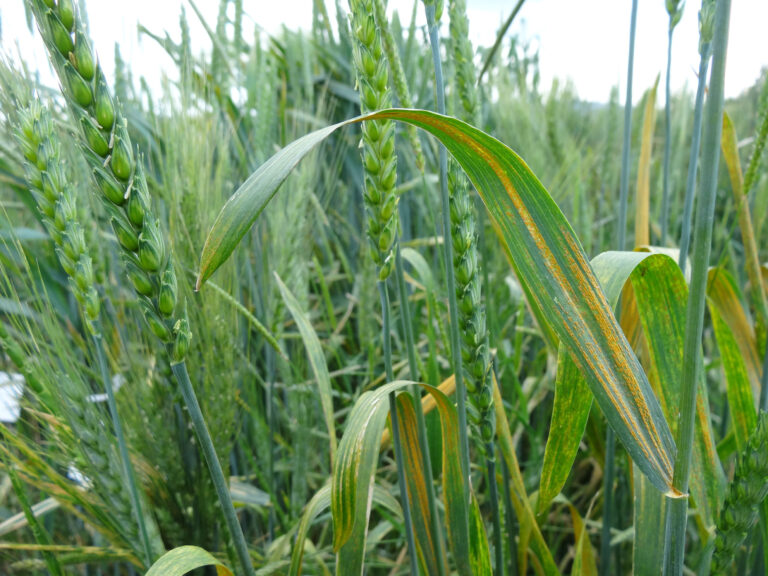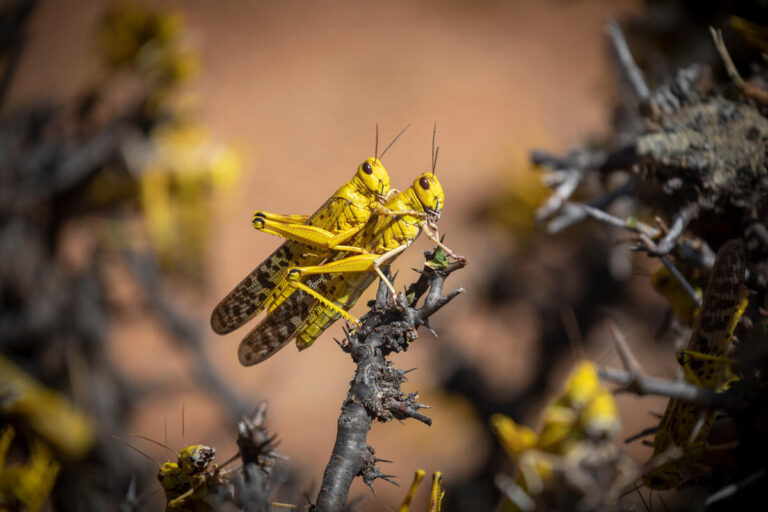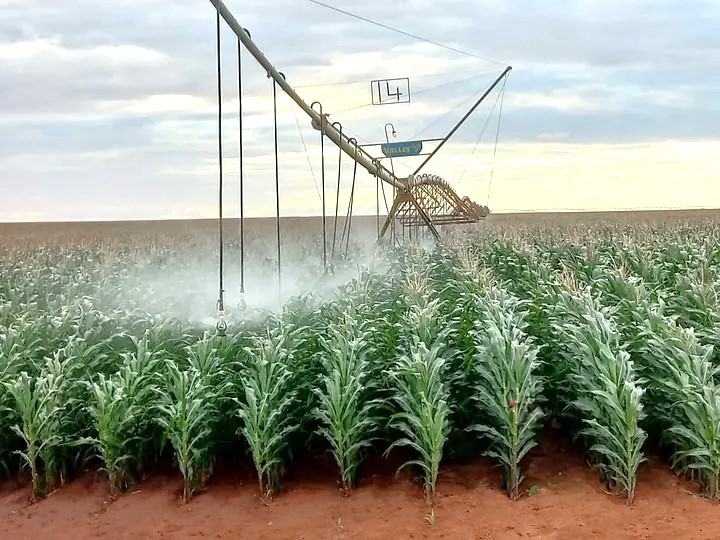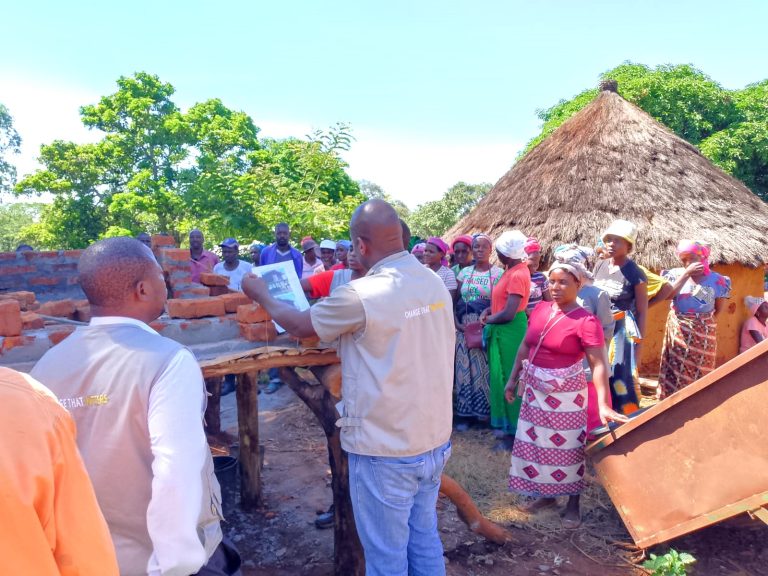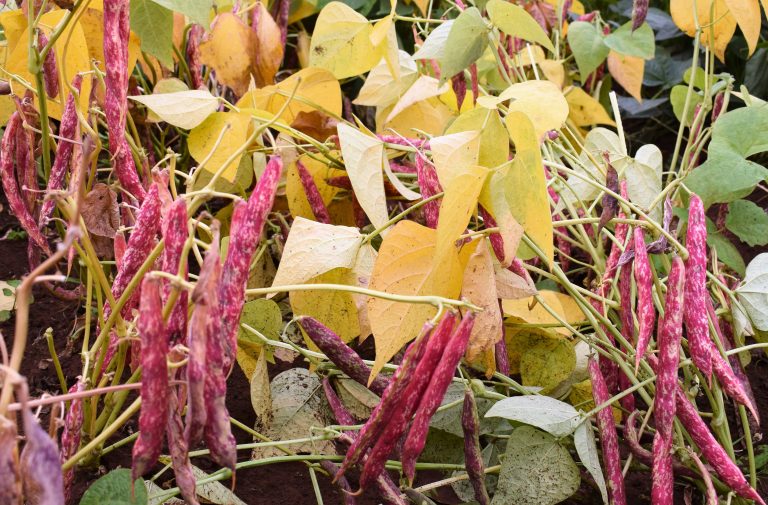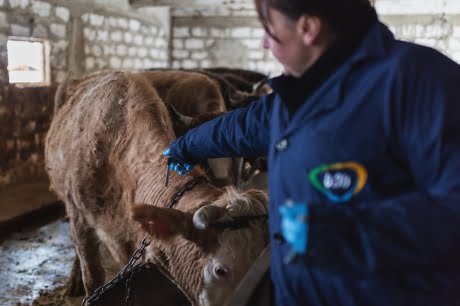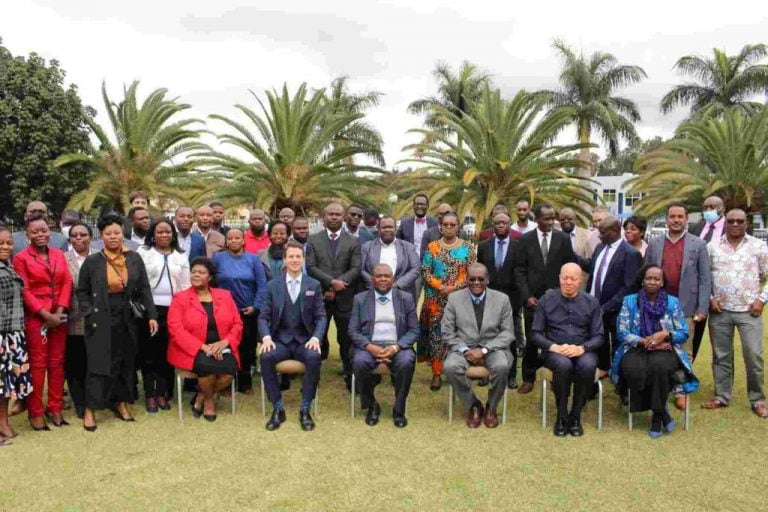The alarm went off a few minutes ago, before the morning call to prayer. It is now a quarter past five and still pitch-black outside. Miles Woodgate is eating breakfast and getting ready for the long day ahead fighting Desert Locusts. This Englishman is one of the pilots conducting aerial spraying in the easternmost country of the Horn of Africa — the first time in 30 years that the security situation has allowed for this to happen in Somalia. Together with the rest of the crew of Guardian Helicopters, a company hired by Food and Agriculture Organisation (FAO) to help in Somalia’s anti-locust campaign, Miles is going to be picked up at 6.00 at the hotel to make their way to the airport.
“We got on the road a month ago. Within that month, the aircrafts have been flown from the [United] States [of America]. We reassembled them in Nairobi (Kenya), flew to Mogadishu (Somalia) and we are up here now in Garowe (Puntland State of Somalia), and we have been spraying for the last two weeks,” recalls Miles. “Especially with the [delays because of the] COVID-19 situation and the difficulty in getting here, it is quite amazing how it has all been pulled together,” he adds.
First on the agenda is the regular morning briefing with the team, FAO experts and Government officials at the airport. “The day is actually organized by a phone call from Dr Hared in the evening before the flying day,” explains Miles. Dr Hared Nur is a Somali Desert Locust expert working with FAO to coordinate the locust control operations in Puntland and Galmudug. Based on the information received the night before from ground spotters, targets for the day are set.
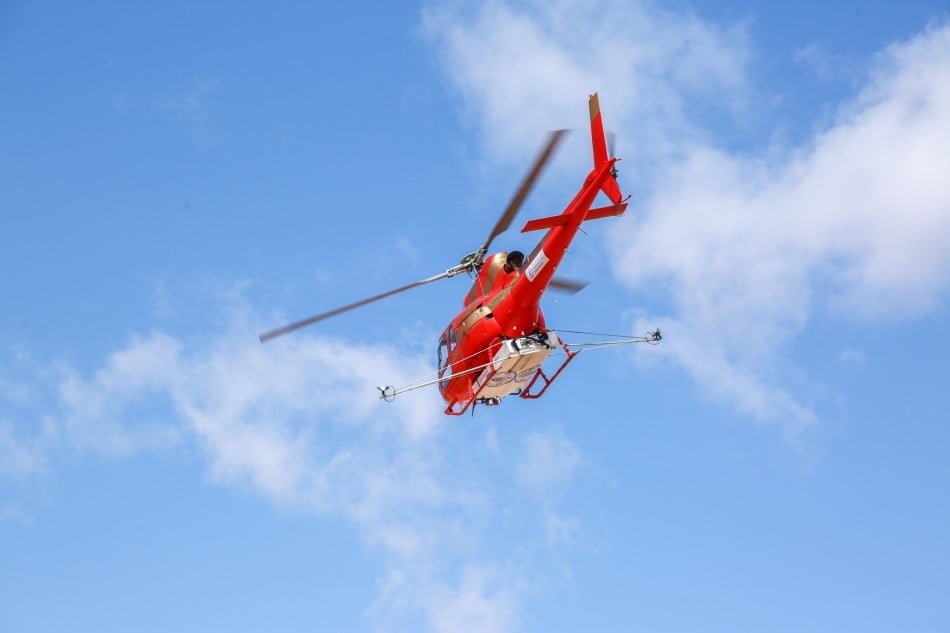
The art of spraying from the air
“Especially when they are adults and form swarms, Desert Locusts are a highly mobile target, thus aerial control operations are the most effective because they allow greater flexibility to combat locusts within a much broader area,” explains Nur. These aerial operations, funded by USAID, include surveillance, allowing teams to act quickly to contain any upsurge.
The tanks now refueled and the briefing over, it is time to take off. “A typical flying day for us, we will log between six and seven flying hours. It is a mixture of getting the helicopter to the spraying location and obviously the spraying,” says Miles.
Today the team is heading out to the base in Qardho, where they will refuel and load the biopesticides before they start the 2-hour job of spraying a nearby infested area. This nature- based biopesticide specifically targets locusts and does not harm the environment, nor does it pose any danger to humans or livestock.
Logistics are the main challenge. It is not just about refueling, but most importantly making sure that sites are controlled and that the zones in which they land are safe for the pilots and the ground crew as well. Somalia continues to face conflict in many parts of the country.
Also, to spray Desert Locusts, you need to fly low, “the lower, the better,” stresses Miles. “If we can fly one and a half to two metres [from the ground], that’s perfect,” he adds. This is the best way to optimize coverage and avoid the strong winds that can blow the biopesticides away from their target.
Office in the air
Meanwhile, Miles needs to be mindful of the environment. “When we are out flying, we don’t want to disturb local populations, the people and the animals…” advises the pilot.
Miles had worked before in the Ogaden region in Ethiopia, but this is his first time working in Somalia. “The territory is quite similar, but I am surprised to see so many wild animals,” he says. He enjoys his office views from the air: camels, goats, donkeys, baboons… “It’s fantastic how alive this desert is,” says Miles.
It is also his first experience with such swarms of Desert Locust. Most of the time, desert locusts are on the ground, munching away at the vegetation and destroying fields. However, when they start to fly, they hit the windshield with such force that they can cause damage. “When that happens, we turn away and we try and avoid them because it can damage the aircraft. It can damage the blades, and they can get stuck in the radiator,” explains the pilot.
Debrief, new briefing and start over again
The day’s spraying ends, and they land back in Garowe airport. “We clean the tanks, clean the aircraft, have a debrief, give the paperwork to FAO and the Government to let them know how many hectares we’ve covered,” says Miles. The collaboration between FAO, the Ministry of Agriculture and Irrigation and the various government institutions is a key element of the Desert Locust response in Somalia.
With the generous funding from the international community, aerial and ground operations in 2020 have already controlled close to half a million hectares across the Greater Horn of Africa and Yemen. This includes the 28 930 hectares which have been treated in Somalia.
By the June harvest, this regional effort has saved USD 280 million worth of crops, ensuring that over 6 million people in the region will be able to meet their annual cereal needs.
Yet, there is much more to be done. Able to fly up to 150 kilometres a day, these desert locusts are wreaking havoc in a growing number of regions and countries. The quicker they can be controlled, the fewer people risk their food and livelihood sources being destroyed.
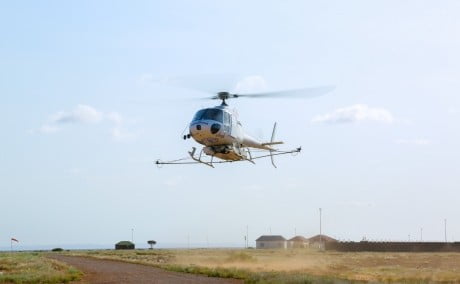
However, the Desert Locust response in the Greater Horn of Africa and Yemen has a current funding gap of USD 81.6 million. If this is not addressed, these current efforts of control and surveillance will have been in vain.
The crew usually gets back to the hotel around 17.30 or 18.00, but for Miles, the day is not over yet. He still needs to do that vital paperwork for FAO and the government on the areas covered, surveyed and sprayed for that day. FAO will collect and analyze this material, updating the Locust Watch dashboard on which the international community relies for real-time information
Miles’ phone rings one more time: it is Hared checking in about tomorrow. Today’s work is done. But tomorrow’s is just starting.



